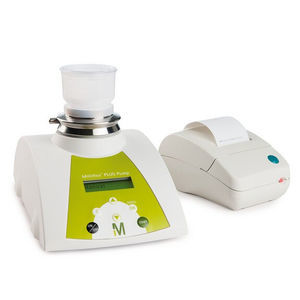
Automatic laboratory extractor LiChrolut®solid-phase
Add to favorites
Compare this product
Characteristics
- Operational mode
- automatic
- Options
- solid-phase
Description
The goal of solid-phase extraction is the selective isolation of target analytes from a complex sample or much larger sample volume prior to chromatographic analysis (e.g. HPLC, GC, TLC). As solid-phase extraction works on the principle of liquid chromatography, Merck’s LiChrolut® columns use strong but reversible interactions between the analyte and surface of the stationary. Typical interactions include hydrophobic (Van-der-Waals forces), polar (hydrogen bonding, dipole-dipole forces) or ion exchange interactions.
Since interactions between the stationary phase and matrix should not occur, it is important to perform appropriate sample pretreatment. This allows the difference in chemical properties between the analyte and matrix components to be emphasized by altering the pH or the ionic strength of the sample solution. Under these conditions, the analyte is enriched as a narrow zone on the stationary phase. Subsequent to a washing step, which serves to remove possible adsorbed sample components, selective elution of the analytes can occur.
Catalogs
ChromBook
406 Pages
Other Merck products
Millipore-Preparation, Separation, Filtration & Monitoring Products
Related Searches
- Hydrophobic filter
- Air filter
- Laboratory filter
- Bacterial filter
- Membrane filter
- Sterile filter
- Laboratory automation platform
- Line filter
- Air sampler
- Polypropylene filter
- Water filter
- Syringe filter
- Blood filter
- Microbial air sampler
- Laboratory extractor
- PES filter
- Solid filter
- Dust filter
- Automated laboratory extractor
- Plasma filter
*Prices are pre-tax. They exclude delivery charges and customs duties and do not include additional charges for installation or activation options. Prices are indicative only and may vary by country, with changes to the cost of raw materials and exchange rates.

























